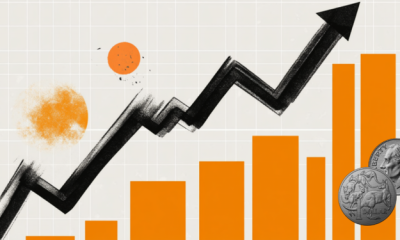

others
Japanese Yen trades with modest loses against USD, lacks follow-through – Crypto News
- The Japanese Yen loses traction after BoJ Deputy Governor Uchida’s remarks.
- A positive risk tone further undermines the JPY and lends support to USD/JPY.
- The uncertain Fed rate cut path weighs on the USD and should cap the upside.
The Japanese Yen (JPY) ticks lower against its American counterpart for the second straight day on Thursday, though remains confined in a familiar range held since the beginning of this week. The Bank of Japan (BoJ) Deputy Governor Uchida Shinichi sounded less hawkish today and said that the central bank will not hike aggressively upon ending negative rates. This, along with the prevalent risk-on mood, undermines the safe-haven JPY, though subdued US Dollar (USD) price action acts as a headwind for the USD/JPY pair.
A slew of influential Federal Reserve (Fed) officials recently indicated that the central bank is in no hurry to start lowering borrowing costs in the wake of the resilient US economy. That said, the prospects for an imminent shift in the Fed’s policy stance keep the USD bulls on the defensive below the highest level in almost three months. Furthermore, hopes that wage growth this year may outpace that of 2023 and pave the way for the BoJ to exit its decade-long ultra-loose policy contribute to capping gains for the USD/JPY pair.
Daily Digest Market Movers: Japanese Yen ticks lower after less hawkish remarks by BoJ’s Uchida
- The Bank of Japan Deputy Governor Uchida Shinichi reiterated that the likelihood of sustainably achieving the price target is gradually increasing, which, in turn, weighs on the Japanese Yen.
- Shinichi further added that Japan’s real interest rate is in deep negative territory and monetary conditions are very accommodative, and the same is not expected to change in a big way.
- Shinichi, however, noted that the BoJ won’t hike rates aggressively even after ending negative rate as the uncertainty over the outlook remains high, helping limit any further downside for the JPY.
- The BoJ earlier this month signalled conviction on hitting the inflation goal and set the stage to pull interest rates out of negative territory at its upcoming meetings in March or April.
- BoJ Governor Kazuo Ueda had said that if the central bank gets evidence that a positive wage-inflation cycle will heighten, it would examine the feasibility of continuing with various steps under the massive stimulus programme.
- Japan’s biggest business lobby Keidanren and trade unions kicked off annual labour talks and big firms are expected to offer the highest wage increase in 31 years this year, paving the way for a shift in the BoJ’s policy stance.
- BoJ Executive Director Tokiko Shimizu said this Thursday that inflation has so far has been driven by cost-push factors and that even if negative rates are abandoned, accommodative conditions would remain in place.
- The US Dollar extends this week’s profit-taking slide from the highest level since November 14 and contributes to capping gains for the USD/JPY pair, though hawkish Federal Reserve expectations could act as a tailwind.
- The incoming US macro data suggested that the economy remains in good shape and gives the Fed more headroom to keep interest rates higher for longer, which, in turn, should continue to act as a tailwind for the buck.
- Several FOMC members, including Fed Chair Jerome Powell, don’t see an urgent case for lowering interest rates, suggesting that a rate cut isn’t likely until the May monetary policy meeting at the earliest.
- Fed Governor Adriana Kugler said on Wednesday that she is optimistic that inflation progress will continue, but stopped short of offering a timeline for when officials may be able to reduce borrowing costs.
- Boston Fed President Susan Collins said that she is looking for more evidence that inflation is on track toward the 2% target before moving to cut interest rates, though that step is more likely later this year.
- Minneapolis Fed chief Neel Kashkari noted that officials would like to see a few more months of inflation data before cutting interest rates and added that he thinks two to three cuts will be appropriate for 2024.
- Richmond Fed President Tom Barkin urged patience and said that it is a good idea for the central bank to take its time with interest-rate cuts given all of the uncertainty about where the US economy is headed.
- The yield on the benchmark 10-year US government bond holds comfortably above the 4.0% mark and supports prospects for the emergence of some USD dip-buying, warranting caution for the USD/JPY bears.
Technical Analysis: USD/JPY needs to break through 148.70-80 barrier for bulls to seize near-term control
From a technical perspective, bears need to wait for some follow-through selling below the 100-day Simple Moving Average (SMA), currently pegged near the 147.60-147.55 region, before positioning for deeper losses. The USD/JPY pair might then accelerate the fall to the 147.00 mark before dropping to the 146.35 intermediate support en route to sub-146.00 levels, or the monthly low touched last week.
Meanwhile, positive oscillators validate the positive outlook for the USD/JPY pair, though the formation of multiple-tops near the 148.75-148.80 region warrants caution for bullish traders. Hence, a sustained strength beyond the said barrier might trigger a fresh bout of a short-covering rally and lift spot prices to the 149.55-149.60 intermediate hurdle en route to the 150.00 psychological mark.
Japanese Yen price today
The table below shows the percentage change of Japanese Yen (JPY) against listed major currencies today. Japanese Yen was the strongest against the US Dollar.
| USD | EUR | GBP | CAD | AUD | JPY | NZD | CHF | |
| USD | -0.04% | -0.06% | -0.09% | -0.14% | 0.05% | -0.16% | -0.11% | |
| EUR | 0.04% | -0.02% | -0.04% | -0.09% | 0.09% | -0.12% | -0.10% | |
| GBP | 0.06% | 0.03% | -0.01% | -0.07% | 0.11% | -0.09% | -0.06% | |
| CAD | 0.07% | 0.03% | 0.01% | -0.04% | 0.11% | -0.09% | -0.05% | |
| AUD | 0.13% | 0.09% | 0.07% | 0.06% | 0.18% | -0.03% | 0.01% | |
| JPY | -0.05% | -0.08% | -0.11% | -0.12% | -0.18% | -0.19% | -0.16% | |
| NZD | 0.16% | 0.12% | 0.08% | 0.09% | 0.03% | 0.21% | 0.02% | |
| CHF | 0.12% | 0.08% | 0.06% | 0.05% | 0.00% | 0.17% | -0.04% |
The heat map shows percentage changes of major currencies against each other. The base currency is picked from the left column, while the quote currency is picked from the top row. For example, if you pick the Euro from the left column and move along the horizontal line to the Japanese Yen, the percentage change displayed in the box will represent EUR (base)/JPY (quote).
Bank of Japan FAQs
The Bank of Japan (BoJ) is the Japanese central bank, which sets monetary policy in the country. Its mandate is to issue banknotes and carry out currency and monetary control to ensure price stability, which means an inflation target of around 2%.
The Bank of Japan has embarked in an ultra-loose monetary policy since 2013 in order to stimulate the economy and fuel inflation amid a low-inflationary environment. The bank’s policy is based on Quantitative and Qualitative Easing (QQE), or printing notes to buy assets such as government or corporate bonds to provide liquidity. In 2016, the bank doubled down on its strategy and further loosened policy by first introducing negative interest rates and then directly controlling the yield of its 10-year government bonds.
The Bank’s massive stimulus has caused the Yen to depreciate against its main currency peers. This process has exacerbated more recently due to an increasing policy divergence between the Bank of Japan and other main central banks, which have opted to increase interest rates sharply to fight decades-high levels of inflation. The BoJ’s policy of holding down rates has led to a widening differential with other currencies, dragging down the value of the Yen.
A weaker Yen and the spike in global energy prices have led to an increase in Japanese inflation, which has exceeded the BoJ’s 2% target. Still, the Bank judges that the sustainable and stable achievement of the 2% target has not yet come in sight, so any sudden change in the current policy looks unlikely.
-
![CSX Corp. (CSX) Stocks Elliott Wave technical analysis [Video]](https://dripp.zone/news/wp-content/uploads/2025/02/CSX-Corp-CSX-Stocks-Elliott-Wave-technical-analysis-Video-400x240.png)
![CSX Corp. (CSX) Stocks Elliott Wave technical analysis [Video]](https://dripp.zone/news/wp-content/uploads/2025/02/CSX-Corp-CSX-Stocks-Elliott-Wave-technical-analysis-Video-80x80.png) others1 week ago
others1 week agoDow Jones slides to one-week low as government shutdown persists – Crypto News
-
![CSX Corp. (CSX) Stocks Elliott Wave technical analysis [Video]](https://dripp.zone/news/wp-content/uploads/2025/02/CSX-Corp-CSX-Stocks-Elliott-Wave-technical-analysis-Video-400x240.png)
![CSX Corp. (CSX) Stocks Elliott Wave technical analysis [Video]](https://dripp.zone/news/wp-content/uploads/2025/02/CSX-Corp-CSX-Stocks-Elliott-Wave-technical-analysis-Video-80x80.png) others1 week ago
others1 week agoDow Jones slides to one-week low as government shutdown persists – Crypto News
-

 Metaverse1 week ago
Metaverse1 week agoWhat Satya Nadella’s latest shakeup says about Microsoft’s evolving AI strategy – Crypto News
-

 Metaverse1 week ago
Metaverse1 week agoWhat Satya Nadella’s latest shakeup says about Microsoft’s evolving AI strategy – Crypto News
-

 Technology1 week ago
Technology1 week agoAI isn’t the dot-com bubble, but that won’t stop it from ending badly – Crypto News
-
Business1 week ago
Zcash (ZEC) Extends Rally Above $200 as Privacy Narrative Gains Reflexive Momentum – Crypto News
-

 Blockchain1 week ago
Blockchain1 week ago5 Key Factors Behind Its Growing Value – Crypto News
-

 Blockchain1 week ago
Blockchain1 week agoEurope’s Digital Asset Rules Have A Transferability Blind Spot – Crypto News
-
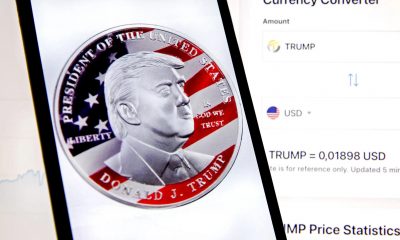
 Blockchain1 week ago
Blockchain1 week agoTRUMP Meme Coin Fights For Survival – Crypto News
-

 Blockchain1 week ago
Blockchain1 week agoXRP Price Under Fire – Extended Decline Raises Fears Of Another Major Sell-Off – Crypto News
-
Business1 week ago
Breaking: Grayscale Solana ETF (GSOL) to Trade with 0.35% Fee – Crypto News
-
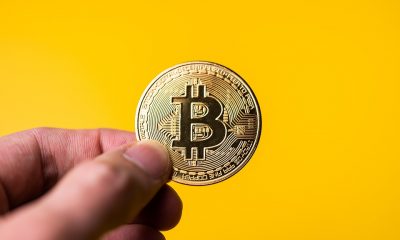
 Blockchain1 week ago
Blockchain1 week agoBitcoin Needs Only A Minor Push To Reach $175K: Analyst – Crypto News
-
Business1 week ago
Senate Democrats’ New DeFi Regulation Proposal Stalls Crypto Market Structure Talks – Crypto News
-

 Blockchain1 week ago
Blockchain1 week agoCrypto Entry-Level Jobs Are Scarce: Dragonfly Capital – Crypto News
-

 Metaverse1 week ago
Metaverse1 week agoBubble or not, the AI spending binge is unprecedented in every way – Crypto News
-

 Technology1 week ago
Technology1 week agoChatGPT will soon pay for you! India’s AI payment pilot set to go live: What it means for users – Crypto News
-

 Cryptocurrency4 days ago
Cryptocurrency4 days agoStripe’s stablecoin biz seeks national bank trust charter – Crypto News
-

 Blockchain1 week ago
Blockchain1 week agoEurope’s Digital Asset Rules Have A Transferability Blind Spot – Crypto News
-

 Blockchain1 week ago
Blockchain1 week agoBitdeer Ramps Up Bitcoin Self-Mining As Rig Demand Cools – Crypto News
-

 Technology1 week ago
Technology1 week agoMeta AI on Instagram can now dub your reels in Hindi: here’s how the feature works – Crypto News
-
Business1 week ago
ASTER Airdrop Delayed to October 20 Amid Criticisms Over Token Allocations – Crypto News
-
Technology1 week ago
Tom Lee’s Fundstrat Predicts Ethereum Rally to $5,500 Following ETH ‘Bottom’ – Crypto News
-

 Cryptocurrency1 week ago
Cryptocurrency1 week agoThe Latest Nobel Peace Prize Winner Is a Bitcoin Supporter – Crypto News
-

 others5 days ago
others5 days agoChina’s Commerce Ministry urges US to correct its wrong practices as soon as possible – Crypto News
-

 Metaverse1 week ago
Metaverse1 week ago‘Don’t do this’: Perplexity AI’s Aravind Srinivas warns after Comet user completes 45-minute online course in 16 seconds – Crypto News
-
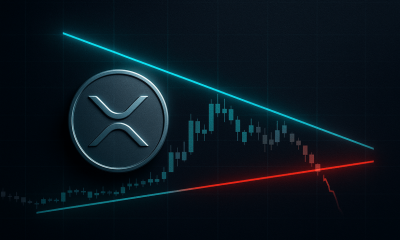
 Blockchain1 week ago
Blockchain1 week agoXRP Could Retest Triangle Support At $2.72, Analyst Warns – Crypto News
-
others1 week ago
Peter Brandt Lists XRP Among Shorts Amid Crypto Market Crash – Crypto News
-
Business1 week ago
Bank of America, Citigroup and Goldman Sachs Explore Issuing Stablecoins Pegged to G7 Currencies – Crypto News
-

 Technology1 week ago
Technology1 week agoBose Angers Customers by Ending Cloud Streaming for Old Speakers – Crypto News
-

 Technology1 week ago
Technology1 week agoBose Angers Customers by Ending Cloud Streaming for Old Speakers – Crypto News
-
Technology1 week ago
STON.fi CMO on Building TON’s Largest Swap & Liquidity Aggregator – Crypto News
-

 Cryptocurrency1 week ago
Cryptocurrency1 week agoCrypto liquidations drive historic market turbulence – Crypto News
-

 others1 week ago
others1 week agoA balanced approach to monetary policy only works if inflation expectations are anchored – Crypto News
-

 others7 days ago
others7 days agoEUR/JPY retreats as Euro slides on French political uncertainty – Crypto News
-
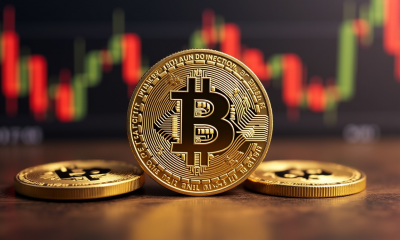
 Cryptocurrency7 days ago
Cryptocurrency7 days agoWhy Bitcoin could rebound up to 21% this week: experts explain – Crypto News
-

 Metaverse7 days ago
Metaverse7 days agohuman intelligence for artificial minds – Crypto News
-

 Metaverse4 days ago
Metaverse4 days agoWalmart teams with OpenAI for ChatGPT purchases. The retailer is ‘ahead of the curve’. – Crypto News
-
others1 week ago
Breaking: $8 Trillion Morgan Stanley Opens Bitcoin Investments to All Wealth Clients – Crypto News
-

 De-fi1 week ago
De-fi1 week agoLarva Labs Art Blocks Auction Surpasses $30,000 – Crypto News
-
others1 week ago
U.S. Inflation Data: BLS to Release CPI Report on October 24 Amid Government Shutdown – Crypto News
-
Business1 week ago
Crypto Market Loses $670 Billion on CEX Auto Liquidations, Altcoins Crash Intensifies – Crypto News
-

 Metaverse1 week ago
Metaverse1 week agoIndia key to shaping future of Artificial Intelligence, says Anthropic CEO Dario Amodei after meeting PM Modi – Crypto News
-
others1 week ago
Pump.fun Rival Zora Rallies Over 30% Following Robinhood Listing – Crypto News
-

 Cryptocurrency1 week ago
Cryptocurrency1 week agoMorgan Stanley opens crypto fund access to all wealth clients – Crypto News
-

 Technology1 week ago
Technology1 week agoPENGU turns bullish as Pudgy Penguins teams up with Nasdaq-listed Sharps Technology – Crypto News
-

 Cryptocurrency1 week ago
Cryptocurrency1 week agoPolymarket Token Is Coming, But Likely Not This Year: Sources – Crypto News
-
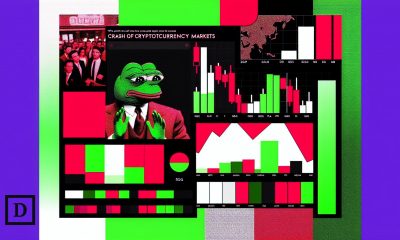
 De-fi1 week ago
De-fi1 week agoCrypto Markets Plummet as BTC Briefly Drops Below $106K – Crypto News
-
Business1 week ago
Here’s Why XRP Price May Have a Zcash-Like Surge – Crypto News
-

 Metaverse1 week ago
Metaverse1 week agoClaude automates reports and presentations effortlessly – Crypto News
-
Business1 week ago
Is the Bitcoin Top In? Raoul Pal Signals Higher Liquidity Cycle Despite Market Selloff – Crypto News





